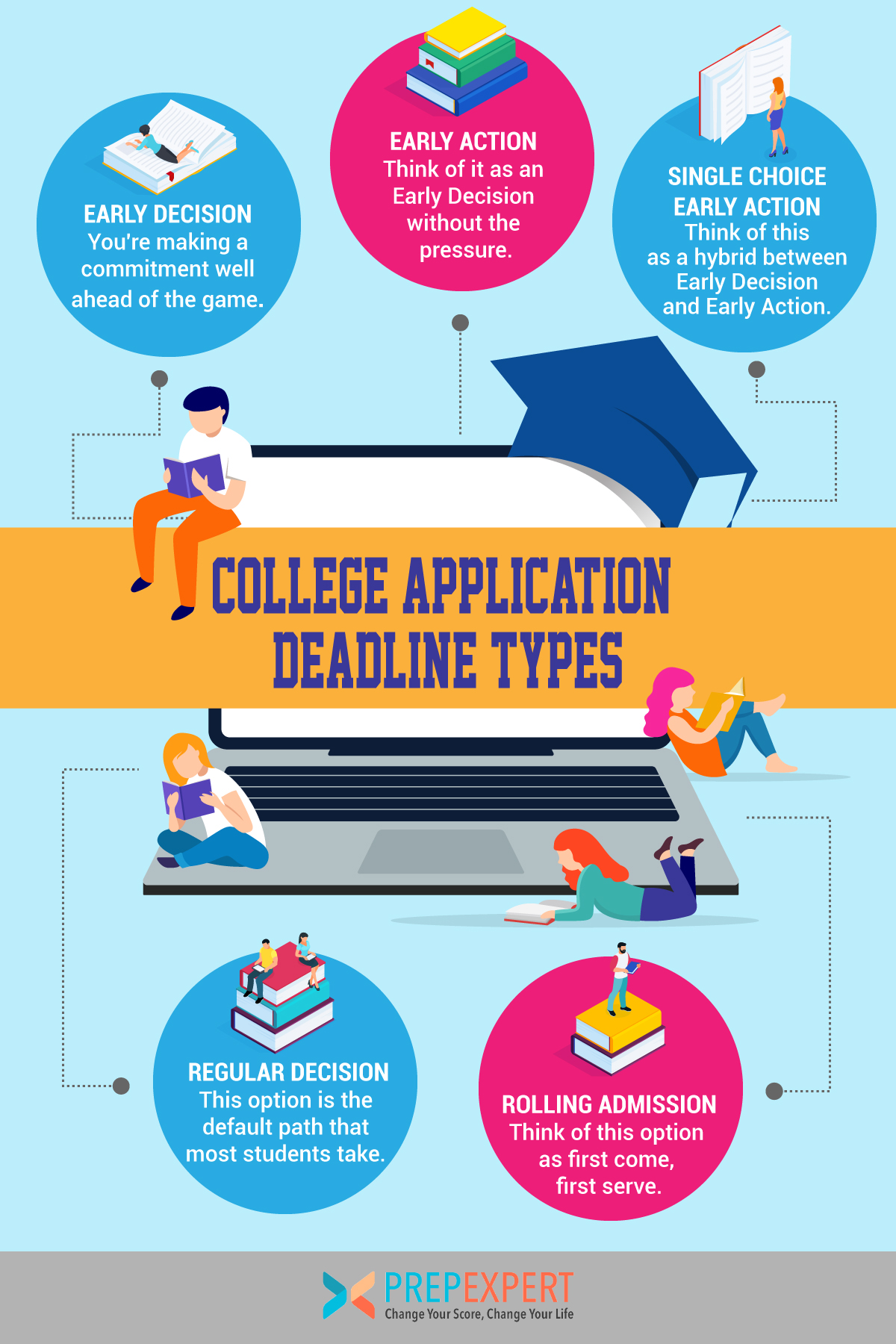College Application Deadline Types
Part of the college application process is understanding the different deadline schedules out there, so you can prepare accordingly. There are pros and cons to them, so it’s important to understand the various college application deadline types.
Here is a quick primer on college application deadline types, so you can decide which one better fits your timetable and needs.
Learn how to prepare for standardized tests with our year-round SAT prep and ACT prep courses today.
Early Decision
You’re making a commitment well ahead of the game.
When you go with the Early Decision route, your application is normally submitted around November with a decision made usually by December.
Early Decision deadlines generally follow the same timeline as Early Action with one significant difference: they are binding agreements. What that means is if you apply to a school’s Early Decision track and are accepted, then you agree to enroll there no matter what.
If you are accepted by any other school, you must withdraw your applications from them. That’s why only go the Early Decision route if you’re 100% certain it is the school for you. Otherwise, you’ll be stuck without options to fall back on.
Early Action
Think of it as an Early Decision without the pressure.
Early Action is similar to Early Decision because you’ll submit your completed application around November, followed by a December decision. The key difference here is you can still apply to other schools.
You aren’t locked into that first one alone. What that means to you is the possibility to receive an early admissions decision but still being open to other offers. Let’s say that you apply for Early Action to your number two choice but also want to submit to your number one too.
An Early Action decision from your number two school means you can take that offer to enroll without a problem, or you can still try to get into school number one. You aren’t automatically bound to enroll in number two.
Some schools will have multiple Early Action deadlines, so be aware of that when researching their application timelines.
Single Choice Early Action
Think of this as a hybrid between Early Decision and Early Action.
Single Choice Early Action means that you are entering into a non-binding yet more restrictive agreement with a school.
You can open to apply to other schools. However, the one that you choose with this option means that you can’t enter into Early Action with any other school.
Not many schools offer this specific option, but if you go with it then it will demonstrate a heightened interest level. This greater interest can tip the decision in your favor with admissions officials there.
Regular Decision
This option is the default path that most students take.
If you aren’t sweating the Early Decision or Early Action processes, then go ahead and stick with the Regular Decision route.
Regular Decision deadlines for the upcoming fall semester are usually in the preceding January or February of that year. Regular Decisions students will then receive their decisions by that April.
These deadlines are non-binding. That means you can apply to as many schools as you want without a problem. If you’re unsure of where to go and want to put a lot of applications out there, this path will give you enough time to do so.
Rolling Admission
Think of this option as first come, first serve.
Rolling admission deadline schools will continue to accept applications until their programs fill up. Sometimes these spots fill up completely as late as April and summer itself. However, you run the risk of losing your spot if the class fills up quick, so apply early.
Also, if you’re looking to get into specific academic programs, check for adjusted deadlines to abide by. Be sure to contact the admissions office to get all the deadline details in advance.
For more test strategy, college admissions, and scholarship application tips sign up for our FREE class happening right now!
College Application Deadline FAQ
What’s the difference between Early Decision and Early Action?
Early Decision deadlines generally follow the same timeline as Early Action with one significant difference: they are binding agreements. What that means is if you apply to a school’s Early Decision track and are accepted, then you agree to enroll there no matter what.
What is a Single Choice Early Action?
Single Choice Early Action means that you are entering into a non-binding yet more restrictive agreement with a school. You can open to apply to other schools. However, the one that you choose with this option means that you can’t enter into Early Action with any other school.
When are Regular Decision deadlines and announcements?
Regular Decision deadlines for the upcoming fall semester are usually in the preceding January or February of that year. Regular Decisions students will then receive their decisions by that April.
How does Rolling Admission work?
Rolling admission deadline schools will continue to accept applications until their programs fill up. Sometimes these spots fill up completely as late as April and summer itself. However, you run the risk of losing your spot if the class fills up quick, so apply early.
